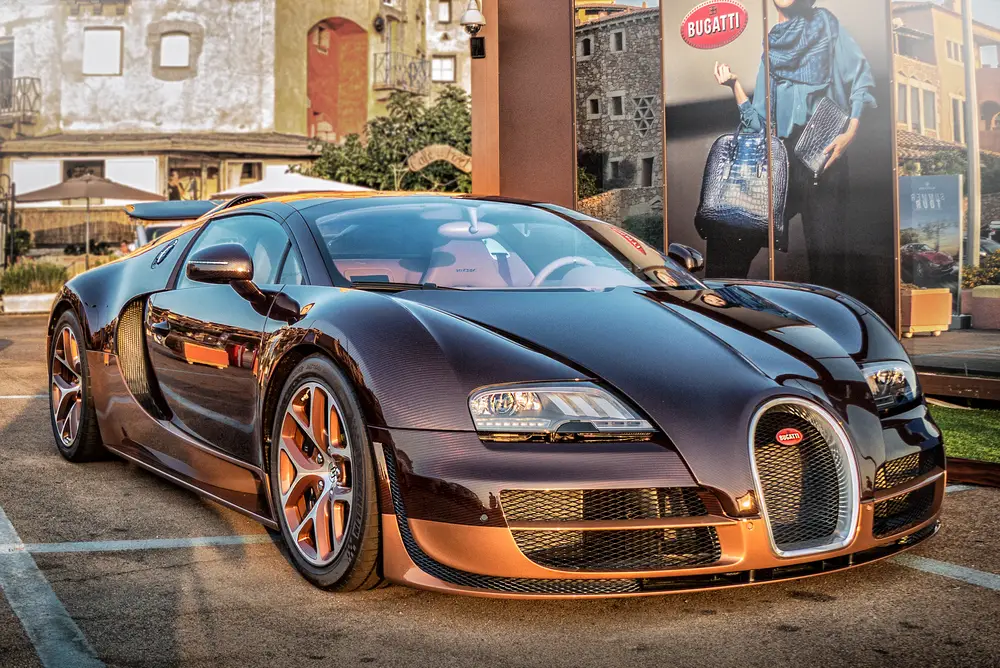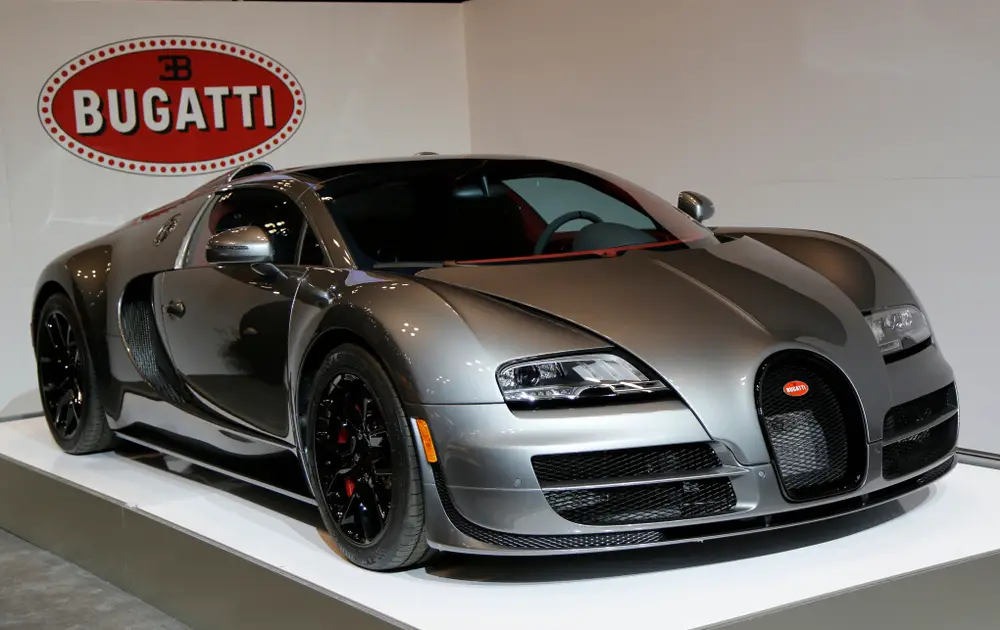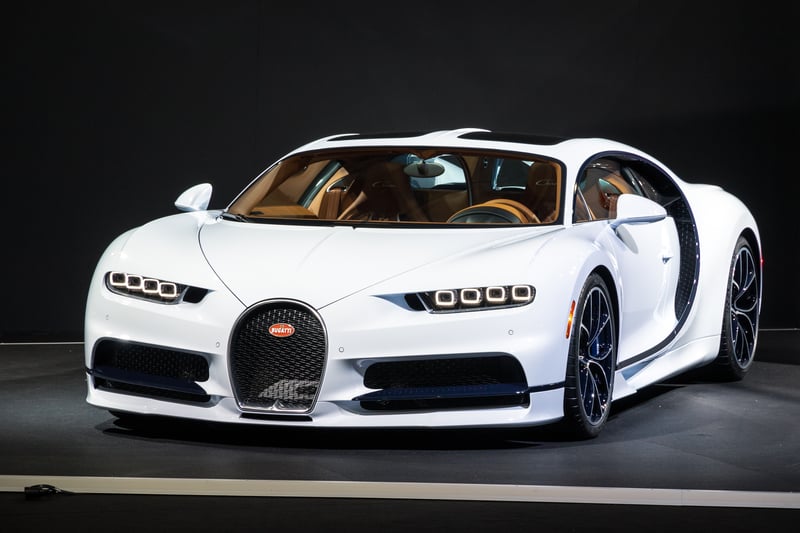
If you are interested in hypercars, you know that they do not come faster than a Bugatti. The Bugatti Veyron was, for a time, the fastest production car in the world, a distinction now held by the Bugatti Chiron.
These cars cost staggering amounts to purchase. But what is the cost of making a Bugatti?
It costs the VW group around $8 million to manufacture each Bugatti Veyron. They sold them at a loss of around $6 million per car. However, the investment in technology means the cost of making a Bugatti Chiron is far lower, although a precise figure still needs to be determined.
A persistent rumor suggests that Bugatti cars sell at a massive loss. The marque served as a research and development testbed for the VW group, with the additional benefit of the halo effect enhancing the group’s reputation.
However, available information suggests that Bugatti is profitable, despite its enormous build costs.
Build Costs Of The Bugatti Veyron and Bugatti Chiron
When considering the cost to produce a Bugatti Veyron or Chiron, or indeed one of the ultra-rare limited edition models, some of the costs can be tied reasonably directly to a particular vehicle.
In contrast, others are amortized over the entire production run of the model (and even beyond).
It can be challenging to assess the exact cost of making a particular model of Bugatti due to accounting practices in the VW group (which used to own Bugatti) and the fact that research and development poured into the Veyron has been used to design the Chiron.
In other words, the cost of making a Chiron has been subsidized by the time, money, and effort poured into developing the Veyron.
Direct Costs Of Building A Bugatti
Bugatti’s performance is far beyond competitors such as Ferrari and Lamborghini, and the cars have price tags to match. Part of why they are so expensive we can attribute to their rarity, but another factor is the materials Bugatti uses to build its cars.
Building a Bugatti’s body is expensive, as both the Veyron and the Chiron feature a monocoque chassis constructed entirely from carbon fiber. The unique engines used in these cars, a forged aluminum W-16 design with four turbochargers, not only put out extreme amounts of power but also cost a lot to make.
The hundreds of silicon microchips used to control these powerful speed machines also contribute enormously to the cost, given the current shortage of chips worldwide.
Chips that not long ago would only have cost a few dollars can now only be acquired for around ten times as much, significantly impacting the expense of making a Bugatti.
These are only some of the materials used to build a Bugatti that contribute to its cost. Moreover, as commodities’ prices fluctuate, the exact materials cost also varies, making it impossible to assess a precise material cost for a Bugatti.
Another direct cost of making a Bugatti is labor, as these vehicles are entirely hand-built. Because technicians are paid weekly or monthly, one cannot say exactly how much labor costs for a particular Bugatti.
However, given data on the number produced in a month, one can calculate an average labor cost per Bugatti.
Amortized Costs Of Building A Bugatti
The primary cost of building a hypercar lies in the research and development of new technologies.
For this reason, most supercar/hypercar manufacturers, such as Lamborghini and Ferrari, gradually implement changes in new models. This slow introduction of new technologies allows each new offering to turn a profit.
The Bugatti Veyron does not follow this model. After the VW group acquired the rights to the Bugatti trademark (and the Chateau St. Jean in Alsace) in 1998, they began developing a radically new hypercar that would far outperform competitors, a project that resulted in the Bugatti Veyron.
The designers and engineers who worked on the various aspects of this new car brought phenomenal expertise and commanded salaries to match. Moreover, prototypes had to be built and tested.
Once Bugatti engineers finalized the design, they needed to produce the custom tools and molds required to make this car, resulting in further costs. They also had to obtain patents and other intellectual property protection.
But once one has accounted for the direct and amortized costs of making a Bugatti Veyron, how much does it cost to make one?
The Estimated Cost Of Making A Bugatti Veyron

- Cost To Produce: $7.95 million
The Bugatti Veyron debuted in 2005 as the world’s first 1000-horsepower car and a marvel of engineering. Between 2005 and 2015, 450 were built and sold for $1.3 million each, although, toward the end of its run, the manufacturer suggested retail price (MSRP) was $1.7 million.
However, the costs involved in designing, prototyping, and testing this groundbreaking vehicle meant that the VW group was selling them at a considerable loss, at least for part of its production run. There are three reasons why they could afford to do so:
- The sheer size of the VW group, which also owns Audi, means that they sell an enormous number of economy cars, such as family sedans, with a significant markup on each one. As a result, they make so much profit on these cars that they can balance the loss incurred in producing and selling the Veyron.
- The Bugatti Veyron served as a research and development (R&D) testbed for engineers in the VW group to play with all sorts of innovations that may one day benefit their bread-and-butter economy cars.
- The Veyron served as a potent advertisement of the engineering prowess of the VW group, boosting the prestige of their economy cars through the so-called “halo” effect.
The MSRP for a Bugatti Veyron in 2013 was $1.7 million. However, the Berstein Group estimated the manufacturing cost was around $7.95 million As a result, the VW group lost about $6.25 million per Veyron sold.
The Estimated Cost Of Making A Bugatti Chiron

- Cost To Produce: $2.4 Million
The Bugatti Chiron debuted in 2016 as the successor to the Veyron. It builds on all the research and development that went into its predecessor. As a result, although Bugatti has spent an estimated $1.62 billion on developing the Chiron, much of this cost was invested in the Veyron’s development.
The Bugatti Chiron is, in many ways, an update of the Veyron, with a redesigned skin and interior, an upgraded W-16 engine that puts out 1500 horsepower, and an emission upgrade that diminishes the hideous carbon footprint of its predecessor.
The development of these improvements accounts for the bulk of the new costs involved in making a Chiron. Most of the other components of the Bugatti Chiron are unchanged from the Veyron.
With a price tag of approximately $3 million for a Bugatti Chiron, a designated production run of 500 cars, and much of the research and development costs amortized to the loss-making Veyron, Bugatti expects that the Chiron will soon turn a profit and land the marque in the black.
Bugatti Profit Margins & What The Rimac Takeover Signifies
In September 2020, Porsche and Croatian electric hypercar group Rimac announced that they would take over control of Bugatti from the VW group, with Porsche having a 45 percent share and Rimac a 55 percent share in the marque. In the final quarter of 2021, this venture launched under the name Bugatti Rimac.
Since Mate Rimac founded Rimac in 2009, the Croatian company has become a sought-after provider of electronic technology to many automotive manufacturers and a significant driver of innovation in batteries and software.
Although plans for Bugatti’s future are still essentially company secrets, Mate Rimac has stated his aim to significantly increase the profit margins of Bugattis while maintaining its outstanding performance. The primary way Bugatti cars’ profit margin will be increased is by reducing the cost of making them.
As the future of cars shifts from the internal combustion engine to electric motors, the new partnership will enable Bugatti to adapt. However, predicting what future iterations of the Bugatti will cost to make is nearly impossible.
Conclusion
Including research and development costs, the average cost of building a Bugatti Veyron is approximately $8 million, leading the company to make a loss of around $6 million per car. The bulk of the cost comes from the $1.62 billion spent on R&D.
The Bugatti Chiron, the successor to the Veyron, shares much of its technology and thus piggybacks on its R&D costs. As a result, although we do not know the cost of making each car, we do know that Bugatti is turning a healthy profit on them, especially given the $3 million price tag.
